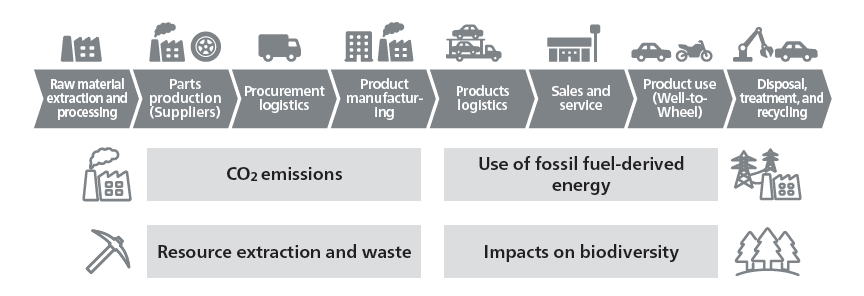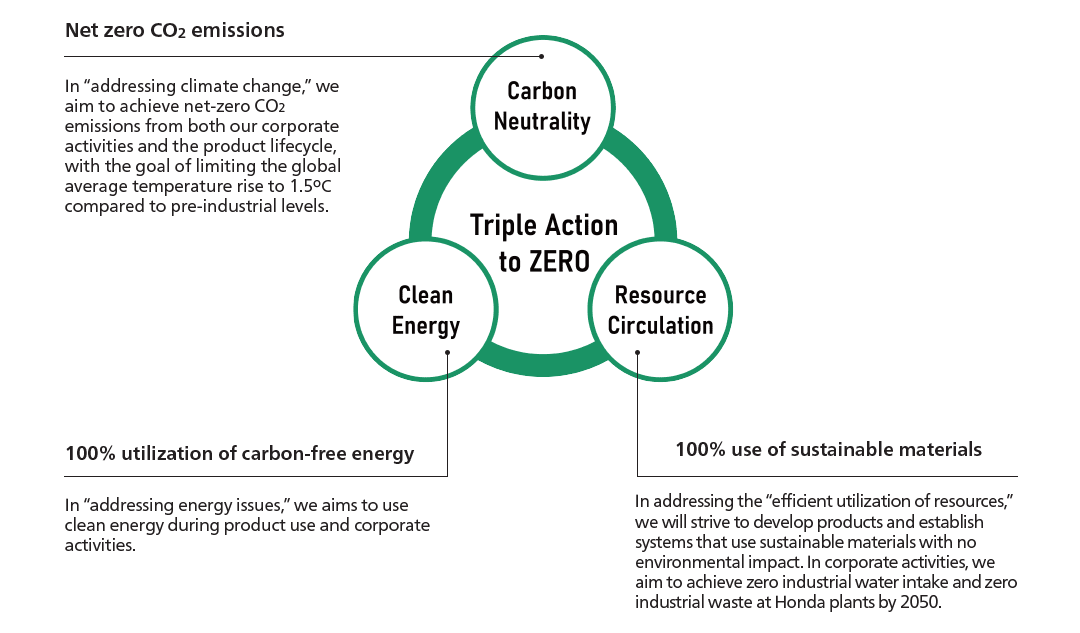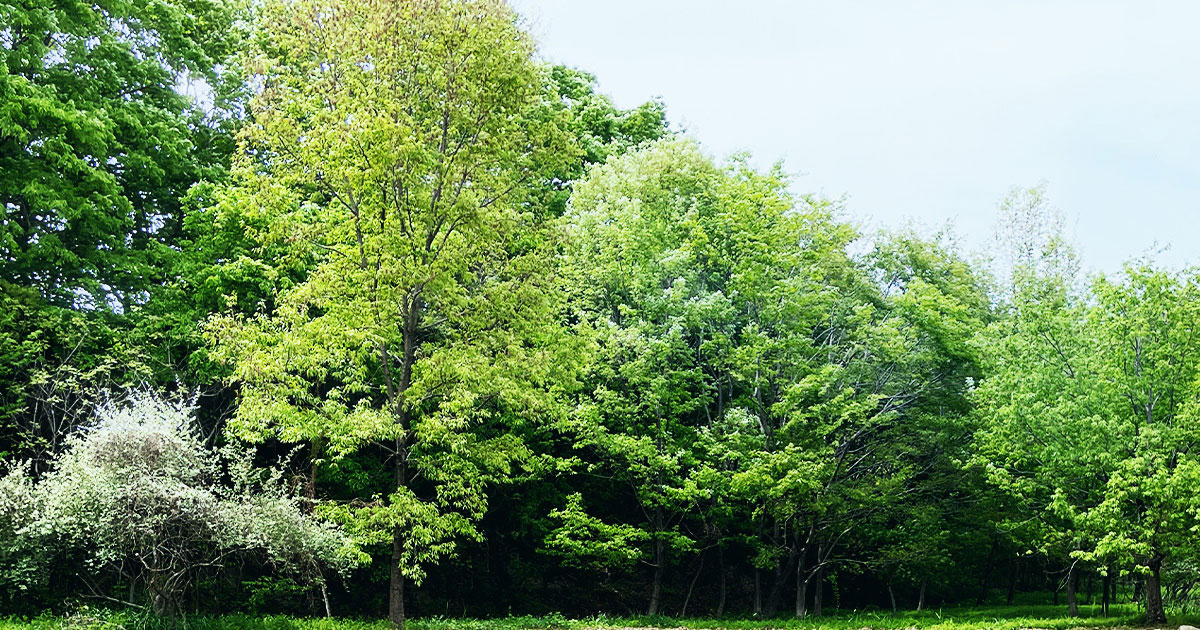
Honda recognizes that all business activities have environmental impacts.
To address these challenges, it is important to consider the environmental impacts of each stage of the product lifecycle.
Honda identifies the main environmental impacts as: CO₂ emissions, use of fossil fuel-derived energy,
extensive resource extraction and waste, and impacts on biodiversity.
Main Environmental Impacts in the Product Lifecycle

Honda, aiming for sustainable business practices, has set achieving a “Zero Environmental Impact Society”
as one of its company-wide priority issues. To address environmental impacts comprehensively, Honda has
established four materialities to guide its efforts.
Priority Issues
Zero Environmental Impact Society
Materiality

The activities aimed at achieving a “Zero Environmental Impact Society“ are centered around “Triple Action
to ZERO,” a concept that consolidates three key initiatives: “Carbon Neutrality,” “Clean Energy,” and
“Resource Circulation.”
The three initiatives of “Triple Action to ZERO” are closely related and we aim to maximize synergistic
benefits by considering their linkages.
The “Triple Action to ZERO” initiative is also linked to the international demand for preserving
biodiversity and fostering harmony with nature. In advancing this initiative, we will consider “nature-based solutions*” as well.
Nature-based Solutions (NbS) involve advancing societal challenges while conserving and restoring natural ecosystems.

Honda has set the Fiscal Year Ending March 31, 2031 goals related to the materialities of “addressing
climate change” and “addressing energy issues” and is prioritizing efforts to achieve these CO₂ reduction
targets as part of its commitment to achieving “carbon neutrality by 2050” across the entire product lifecycle.
Initiatives related to the materiality of “efficient utilization of resources” are in the early stages of
development, aiming to reduce CO₂ emissions in future upstream and downstream processes. We
recognize the importance of considering natural impacts, such as the materiality of “biodiversity
conservation,” while advancing these efforts. Honda is committed not only to achieving “carbon neutrality
by 2050” but also to pursuing long-term actions to realize a zero environmental impact society.
